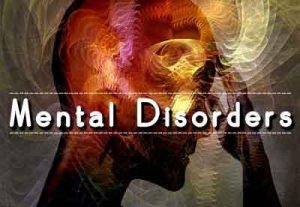- Home
- Editorial
- News
- Practice Guidelines
- Anesthesiology Guidelines
- Cancer Guidelines
- Cardiac Sciences Guidelines
- Critical Care Guidelines
- Dentistry Guidelines
- Dermatology Guidelines
- Diabetes and Endo Guidelines
- Diagnostics Guidelines
- ENT Guidelines
- Featured Practice Guidelines
- Gastroenterology Guidelines
- Geriatrics Guidelines
- Medicine Guidelines
- Nephrology Guidelines
- Neurosciences Guidelines
- Obs and Gynae Guidelines
- Ophthalmology Guidelines
- Orthopaedics Guidelines
- Paediatrics Guidelines
- Psychiatry Guidelines
- Pulmonology Guidelines
- Radiology Guidelines
- Surgery Guidelines
- Urology Guidelines
New approach to diagnosing mental disorders

Washington : A consortium of psychiatrists and psychologists has proposed a new approach to diagnosing mental disorders.
The approach is a classification system of a wide range of psychiatric problems based on scientific evidence, illness symptoms and impaired functioning.
The diagnostic system addresses fundamental shortcomings of the fifth edition (2013) of the Diagnostic and Statistical Manual of Mental Disorders (DSM-5), the clinicians' and researchers' guidebook to mental illnesses.
The newly developed diagnostic approach is called the Hierarchical Taxonomy of Psychopathology (HiTOP). In the paper, the consortium from universities around the world, co-led by Stony Brook University, University of Minnesota and University of Notre Dame researchers, advances classification of psychopathology beyond the traditional diagnostic systems.
According to authors, substantial evidence has accumulated that suggest major changes to how mental illness is classified, but DSM-5 offered only modest refinements creating dissatisfaction in the research community. The National Institute of Mental Health (NIMH) produced an alternative model to guide mental health research efforts.
But this approach also has been controversial, as it focuses heavily on neurobiology and much less on investigating issues that are important for everyday psychiatric care, such as prognosis about illness course and selection of treatment.
As researcher Robert Krueger explained it, the DSM can be challenging to use in everyday practice. "It's Byzantine," he said. "It's like the U.S. tax code. You can get lost in the complexity of its contents and still not find a compelling or accurate way to conceptualize your patient."
"The HiTOP system has been articulated to address the limitations currently plaguing psychiatric diagnosis," said lead author Roman Kotov. "First, the system proposes to view mental disorders as spectra. Second, the HiTOP system uses empirical evidence to understand overlap among these disorders and classify different presentations of patients with a given disorder."
Overall, the authors emphasize that HiTOP adheres to the most up-to-date scientific evidence, rather than relying largely on decisions by committee (the approach used to construct the DSM-5). In the assessment of mental disorders, the HiTOP approach accounts for information on shared genetic vulnerabilities, environmental risk factors, and neurobiological abnormalities, such as differences in brain activity between the patients and healthy individuals.
The study is published in the Journal of Abnormal Psychology.

Disclaimer: This site is primarily intended for healthcare professionals. Any content/information on this website does not replace the advice of medical and/or health professionals and should not be construed as medical/diagnostic advice/endorsement or prescription. Use of this site is subject to our terms of use, privacy policy, advertisement policy. © 2020 Minerva Medical Treatment Pvt Ltd